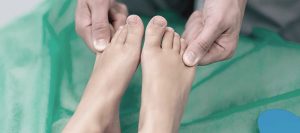
Anyone can develop cuboid syndrome, a condition that causes pain on the lateral side (outside) of the foot.
While the mild sprains and ankle injuries that can lead to cuboid syndrome occur more frequently in athletes and others, like ballet dancers, who make a lot of repetitive or sudden movements, several other risk factors can make individuals more prone to the condition.
What Exactly Is Cuboid Syndrome?
Cuboid syndrome develops when the joint and ligaments near the foot’s cuboid bone are injured or torn.
This can cause your cuboid bone to evert (moves outward) from your foot while your heel bone, or calcaneus, inverts (moves inward) from your foot.
In turn, this can dislocate one or both bones or fracture nearby ligaments.
Some of the foot injuries commonly connected with cuboid syndrome include twisted ankles, missteps, or moving from one side to the other in one’s gait.
What Are The Symptoms of Cuboid Syndrome
Pain on your foot’s lateral side (the side with your little toe) is perhaps the most common symptom of cuboid syndrome.
Putting weight on the lateral side of your foot may make the pain feel sharper, as may pushing on the arch of your foot.
Cuboid syndrome pain can also spread to other parts of your foot if and when you stand on the front of your toes.
Other cuboid syndrome symptoms can include:
- redness near the injured area
- loss of mobility in the ankle or lateral side of the foot
- weakness of the toes on the foot’s lateral side
- tenderness of the lateral side of your foot or your leg
- swelling near the dislocated ligaments or the ankle caused by fluid buildup
What Are The Risk Factors That Can Make You Prone to It?
As noted, the actions and movement repeatedly engaged in by athletes and dancers (sudden jumping, running, or moving from side to side) increase the risk of cuboid syndrome injury.
Additional factors that can make you more prone to the condition include:
- being overweight or obese
- wearing shoes that are too tight or lack sufficient support
- not stretching your foot correctly before exercising
- failing to rest your foot long enough before restarting physical activity
- walking, running, or engaging in physical activity on surfaces that aren’t flat
- fracturing a bone connected to the cuboid
Our Podiatrists At Jaws Podiatry Can Help!
While you can try to relieve the pain and swelling caused by cuboid syndrome through rest, ice, compression, and elevation (the RICE method), it may not be enough to fully resolve the issue.
In such cases, the experienced and skilled podiatrists at JAWS Podiatry in Hollywood, Florida can help with several conservative and non-invasive approaches.
Please send us a message or call us today at (954) 922-7333 to schedule a consultation.
- The Life-Changing Power of Cosmetic Foot Surgery - February 27, 2023
- What Are The Most Common Pediatric Foot Conditions? - October 5, 2020
- 4 Important Things To Know Before Having Foot Surgery - September 21, 2020



